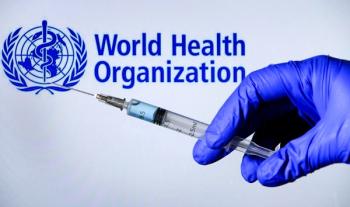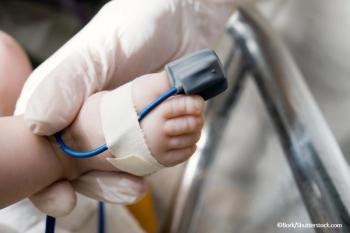
Pertussis False Alarms Prompt CDC Review
ATLANTA -- Three recent outbreaks of respiratory illness erroneously attributed to pertussis led CDC investigators to urge diligence in confirming that the pathogen is indeed the culprit.
ATLANTA, Aug. 24 -- Three recent outbreaks of respiratory illness erroneously attributed to pertussis led CDC investigators to urge diligence in confirming that the pathogen is indeed the culprit.
In all three outbreaks, laboratory findings were equivocal at best, and clinical and epidemiologic characteristics were atypical of pertussis, the investigators reported online and in the Aug. 24 issue of MMWR: Morbidity and Mortality Weekly Report.
"The findings in this report underscore the need for thorough epidemiologic and laboratory investigation of suspected pertussis outbreaks when considering extensive control measures," the authors stated.
The first outbreak occurred in April 2004 in Tennessee and involved community-acquired illness. The first case was a five-week-old infant who tested positive for Bordetella pertussis by nasopharyngeal swab. Prior to diagnosis, the child had been taken to the local health department and two clinics.
Over the next two months, 1,459 people living in the same community saw health care providers for evaluation of pertussis-like symptoms. All the patients received treatment or post-exposure prophylaxis with erythromycin or azithromycin.
Polymerase chain reaction (PCR) analysis of samples from 317 symptomatic patients yielded only 43 (14%) positive tests for B. pertussis. Only two of the 43 (5%) had a cough for at least two weeks (the definition of a clinical case). Of 284 specimens submitted for culture, only the sample from the original case grew B. pertussis.
The second outbreak occurred in March 2006 at a 396-bed hospital in New Hampshire. A hospital lab worker presented to the occupational medicine clinic, complaining of a three-week history of paroxysmal cough and posttussive vomiting.
The worker tested positive for pertussis by the hospital's single-target PCR assay. The patient was treated with azithromycin and furloughed for five days. In addition, all close contacts received post-exposure prophylaxis with azithromycin.
Case investigation from mid-March to early April identified another 15 workers from the same lab who had respiratory illness and either positive or equivocal PCR results. Suspecting an outbreak, hospital officials offered post-exposure prophylaxis and DTP vaccination with TDaP to all clinical laboratory personnel.
Despite the intervention, an additional 18 hospital employees with suspected pertussis were identified by early May through passive surveillance in other parts of the hospital.
By June the number of suspected cases had grown to 134, including 98 with positive or equivocal PCR results. Nasopharyngeal swabs from 192 hospital workers (including 27 of the 134 suspected pertussis cases) were submitted for culturing.
Surveillance data showed no increased pertussis activity in the community, and no vaccinated or unvaccinated infants with pertussis were identified. Retrospective interviews with 120 of the 134 workers showed that many of them did not have classic pertussis symptoms.
CDC laboratory evaluation of 111 of the initial DNA extracts yielded one positive result for B. pertussis and 24 indeterminate results. Additionally, sera from 39 workers with suspected pertussis and no vaccination were submitted for analysis at Vanderbilt University in Nashville, Tenn. One sample tested positive, one tested intermediate, and 37 were negative.
Analysis of aspirates and DNA extracts for a panel of viruses, including Bordetella species, yielded two results consistent with B. holmesii.
The third outbreak began on Sept. 21, 2006 with admission of a 20-month-old child to a 347-bed pediatric hospital in Massachusetts. The child had respiratory symptoms and had not received all age-appropriate doses of DTP vaccine. Initial lab results suggested infection by respiratory syncytial virus. Follow-up testing at the state laboratory was positive for pertussis.
In October, hospital officials initiated enhanced screening of symptomatic workers with suspected pertussis and workers who had been in contact with the child. The program identified 507 workers with upper respiratory symptoms.
By December, 36 nasopharyngeal specimens had tested positive for pertussis by PCR analysis. Most of the workers had cough lasting fewer than two weeks, and 33 (92%) had no classic symptoms of pertussis.
Culture results of 32 PCR-positive specimens were all negative for pertussis. Additionally, sera from 23 PCR-positive cases tested negative for antipertussis toxin IgG.
Specimens from 25 PCR-positive cases were retested at the CDC and a Canadian laboratory. CDC testing yielded one positive result for pertussis and 24 indeterminate results. At the Canadian facility, analysis of six DNA extracts produced two positive results, three indeterminate results, and one uninterpretable result.
Only one of the six specimens tested by the state, CDC, and Canadian laboratories was positive for B. pertussis at all three labs.
In an editorial note, the authors reiterated the need to confirm pertussis etiology before initiating potentially costly interventions. Although several diagnostic laboratory methods are available, culture remains the reference standard and is 100% specific.
"Isolating B. pertussis in culture can take seven to 14 days and might not be timely for acute case management," the authors acknowledged. "However, confirming the etiology with culture in the early stages of a suspected pertussis outbreak will help guide the public health response, and continued isolation of B. pertussis from a subset of clinical samples will provide laboratory evidence of ongoing transmission."
Newsletter
Enhance your clinical practice with the Patient Care newsletter, offering the latest evidence-based guidelines, diagnostic insights, and treatment strategies for primary care physicians.



















































































































































































































































































